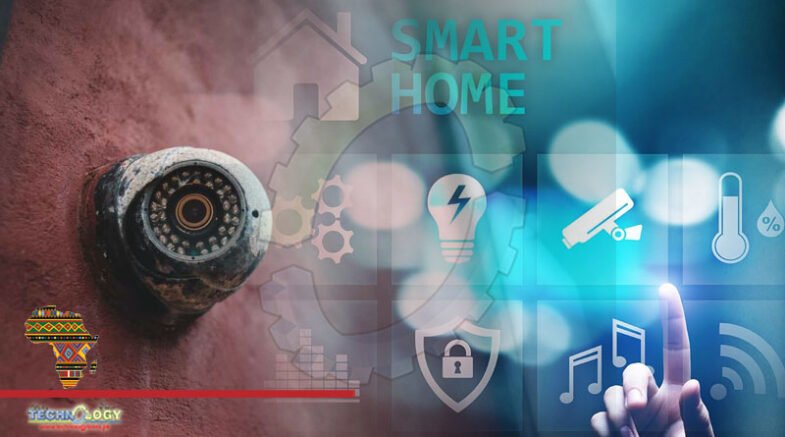Access to affordable always-on connectivity, such as that provided by fibre, and advancement in smart home automation technology has resulted in a growing number of South Africans showing an interest in, and adopting smart home technologies. However, broad adoption of such technology depends on its ability to provide real value or cost saving for households, rather than just being a novelty.

With intermittent lockdown restrictions being in force over the past year, people have been spending most of their time in their homes, and are now giving more thought to how they can use technology to improve their work-from-home or study-from-home environments and overall standard of living.
But, what exactly is a smart home? When thinking about this concept, it is easy to get carried away with images of curtains that open and close themselves at sunrise and sunset, a bath that runs itself when you get home, and more – but these use cases are unlikely to gain wide usage anytime soon.
Broad applications in safety and security
The most common application of smart technology seen in South Africa has been for security purposes, with most modern CCTV camera systems possessing the capability to send notifications or alerts to users, while also giving them the ability to view footage remotely on their mobile devices. This is now possible because we have taken existing technology (the CCTV) and enhanced it through access to internet connectivity and cloud services.
Fibre has played a major role in enabling these developments, not only in individual homes, but broader too: security companies, residential estates and homeowners associations are increasingly turning to CCTV connected via fibre in order to improve safety and security in their neighbourhoods. In some instances, the fibre network operators themselves are installing CCTV cameras and then allowing for external parties to subscribe to video feeds.
Beyond simply giving users the ability to visually monitor ongoing activities in their suburb, using cloud services provides them with more advanced functionality, such as automatic number plate recognition (to warn if a stolen car enters an area) and even facial recognition in order to improve safety and security.
Even better, this technology can be adapted so that cameras can be used to automatically check the temperatures of people entering various establishments – similar to what is done at airports – rather than relying on the current manual scanning and entry of data into sheets of paper.
Connectivity, electricity key
As one can imagine, smart homes are completely reliant on an uninterrupted electricity supply in order to function properly, and it comes as no surprise that many of the people who are adding in smart home features are also investing into securing their supply of power, be it through a UPS system that kicks in during outages or loadshedding – or even moving toward solar power.
Similarly, uninterrupted internet connectivity has become critical in an age where individuals in the household are working, carrying out business and studying from home, all through the use of online communication and collaboration tools. Recent increases to fibre broadband speeds announced by multiple providers – such as a doubling of speed in many instances for Frogfoot fibre customers – means that capacity is no longer an issue, but a loss of connectivity is not just an irritation or minor inconvenience, but can result in missed business opportunities, missed meetings or missed classes.
As a result, more households are ensuring that they have multiple connectivity links in order to ensure redundancy. Typically, this includes a fibre line as the primary connection (it is the most cost-effective, stable and reliable) and fixed-wireless access (such as LTE) as their failover link.
Natural smart home evolution
Rather than a single external influence or campaign to make homes smart, the adoption of smart technologies is happening in a natural and gradual manner as homeowners replace products at the end of their life with newer versions that are more likely to leverage access to broadband connectivity to provide additional benefits to users.
Products to be found featuring some form of smart functionality include TVs, fridges and other household appliances, lighting, heating and cooling systems, pool or other types of pumps, and more – not to mention personal devices such as smartwatches. We also have cloud providers such as Amazon and Google heavily promoting their digital assistants, and conversing with these services is becoming second nature for youngsters, rather than having to type in information. Enabled by the cloud, the applications are potentially endless, and adoption ultimately depends on what someone wants technology to do for them, and whether they can afford it.
Think of having technology that gives you the ability to be notified when there is a burst pipe, and then lets you even turn off your water remotely. Or notifies you when your electricity mains switch has tripped? It’s not to say that we won’t have light-activated curtains that automatically open and close (we will eventually get here), but that the more practical applications that help address real challenges – and save us money – are likely to be adopted widely first.
As familiarity with smart home technology increases, people will increasingly start to differentiate between ‘luxury’ uses of automation and the application of technology in a home to deal with real-world problems. This includes becoming more sustainable, cutting down on water and energy consumption to save on cost, improve safety in their homes and neighbourhoods, or to simply make their lives easier.
Source Gadget
